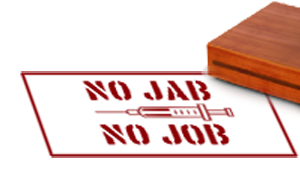A woman in the grocery store who happened to be in line in front of me realized an item she was buying from the frozen food section was past its expiration date by about a month. She came to this realization perusing her items and just in time to bring it to the check-out clerk’s attention. The clerk admitted she didn’t realize frozen food even HAD an expiration date, and called a stock boy over to replace the item. The woman turned to me to apologize for the delay and said something about how the quality control in the store wasn’t what it used to be.
HQAA Blog
'Best If Used By...’ --A Look at Products with Expiration Dates & How They Are Surveyed
Topics: Quality, Process Improvement, Retail, Delivery, Oxygen, Warehouse, Customer Service, Business Practices
2023. We’re twenty-three years into the new millennium. Medicare is close to sixty years old. Time is marching on quickly—relentlessly, some would say. New Year’s Eve parties continue the great tradition of partying into the wee hours, ringing in the New Year with a toast, and getting up January 1st with a renewed optimism, a positive outlook on life, and a list of resolutions to improve. You might say it is a great example of continuous quality improvement.
Topics: Employee Training, Security, Quality Improvement, Renewing Accreditation, Compliance, Process Improvement, Materials Management, Showroom, Retail, Warehouse, Work, Disaster Preparedness, Business Practices, Marketing, Equipment
In early November, each year, our minds turn to Thanksgiving. No surprise that Thanksgiving ranks as one of many American’s favorite holidays. It’s a time of positive reflection, a time to literally give thanks for all the blessings in our lives, and the gateway to the triumvirate of important holidays (Thanksgiving/Christmas/New Year’s Day). And then there’s the food: a grand feast of turkey, ham, stuffing, cranberry sauce, mashed potatoes, rolls, and pecan and pumpkin pie. For many people, it’s a glorious four-day weekend of eating, watching football games, visiting with family and friends, and reflection on the past year.
Topics: Quality, Employee Training, Process Improvement, Showroom, Retail, Delivery, Competence, Work, Customer Service, Business Practices, Marketing, Infection Control, Equipment, DMEPOS
In our January 2022 blog, we talked about fraud, waste, and abuse and touched on compliance programs. The article prompted questions and comments from quite a few organizations and questions of late suggest it might be a good time to do a deeper dive on compliance programs.
Compliance “programs” are sets of policies & procedures specifically designed to help an organization adhere to law and regulation. These policies and procedures are specifically set up to detect, prevent, and correct fraud, waste, and abuse. Medicare requires any provider to have such a program and they have very specific content they want these policies to contain.
Topics: Security, Billing, HQAA Accreditation, Compliance, Avoiding Deficiencies, Complaint Process, Business Practices, Marketing, Surveys, OIG
The Buck Stops Here: Leadership & DME Organizations
Harry Truman, the 33rd President of the United States had a famous slogan, which appeared on a plaque on his desk: “The Buck Stops Here”. Referring to “passing the buck”; that is, shifting blame or responsibility, the saying demonstrates a person’s willingness and ability to take responsibility, find solutions, and lead by example.
Topics: HQAA Accreditation, HME Accreditation Requirements, Business Practices, Surveys
A dictionary defines disclosure as “the action of making new information known or the action or process of revealing information.” In the medical world, healthcare providers define disclosure as “a release of information to persons or entities other than the patient who is the subject of the information.”
Topics: HQAA Accreditation, HME Accreditation Requirements, Compliance, Business Practices, DMEPOS
You could write a book about “employee vs. contractor” pros, cons, legality, and operational efficiency. In fact, there are books written about that very subject. There are also lawyers who specialize in employment law who advise companies about how to structure their staffing around those two broad categories of staff. While accreditation organizations won’t delve into the legalities (that’s for the lawyers to do), accreditation standards DO in fact address both categories of staffing.
Topics: Employee Training, Personnel Files, HQAA Accreditation, Clinical Practice Guidelines, Quality Care, Retail, Delivery, Clinical Respiratory Services, Competence, Customer Service, Business Practices, Surveys, Equipment
In the durable medical equipment industry—as well as in life—it always pays to have a backup plan! Whether its backing up data on the cloud, having contingency plans for staffing issues, or having multiple suppliers for a particular piece of equipment, these plans have saved countless heartaches, businesses, and even lives. While all of these are important, let’s focus today on a company’s responsibility to have adequate back up equipment for their existing customer/patients.
Topics: Business Practices, Equipment
Nothing strikes fear into the hearts of DME owners, managers, and staff more than the Office of the Inspector General (the “OIG”). The fear is perhaps deserved by an extremely small handful of industry people. The vast majority of our industry rank and file have nothing to fear from this sometimes maligned and misunderstood government agency.
Topics: Billing, HQAA Accreditation, HME Accreditation Requirements, Compliance, Avoiding Deficiencies, CMS, Business Practices, OIG
WILL YOUR ORGANIZATION REQUIRE THE COVID VAX
In early September 2021, President Biden issued an executive order instructing OSHA to issue a standard requiring employers to require vaccination or weekly testing for Covid 19. There are exceptions including religious exemptions and also various disabilities (a physician’s statement that a person cannot receive the vaccination). The executive order applies to all Federal employees, contractors, healthcare workers, and employees of private sector employers with 100 or more employees. Various dates for implementation are mentioned in the order-- most of them are in November and/or December of 2021.
Topics: Personnel Files, Business Practices











